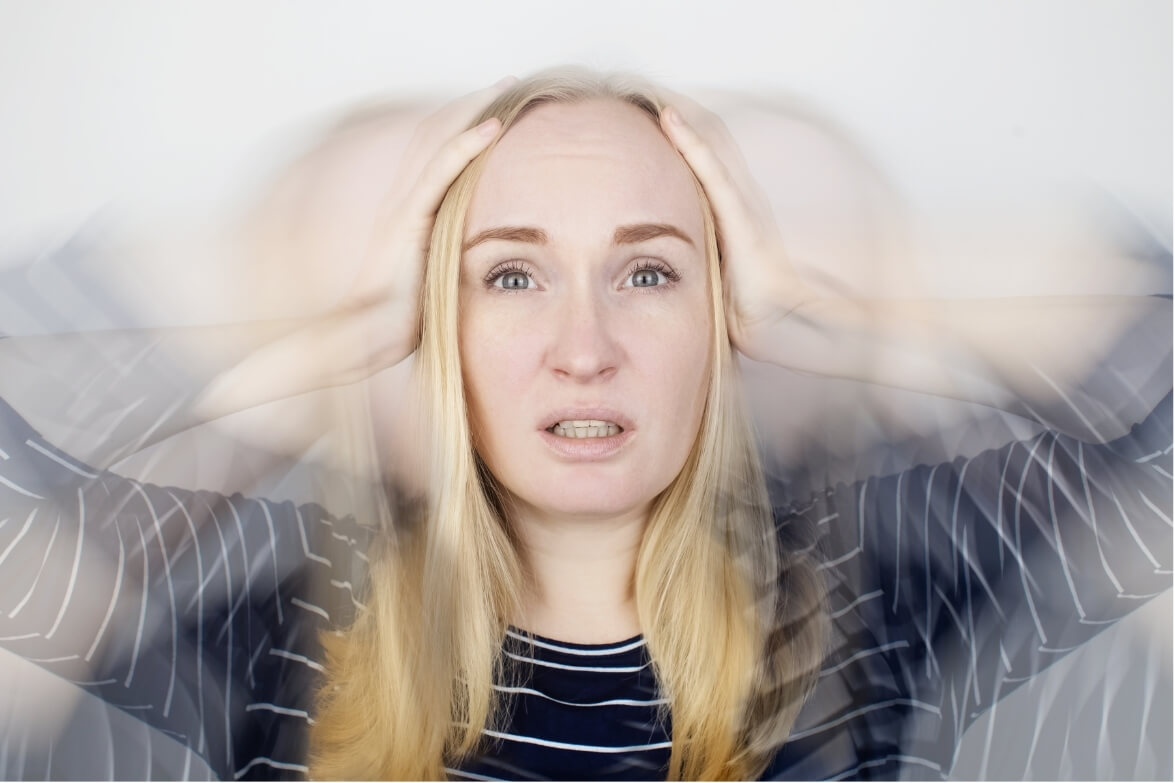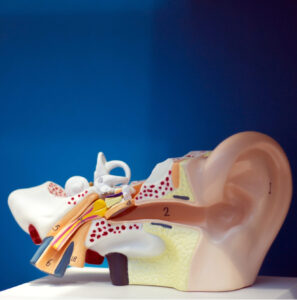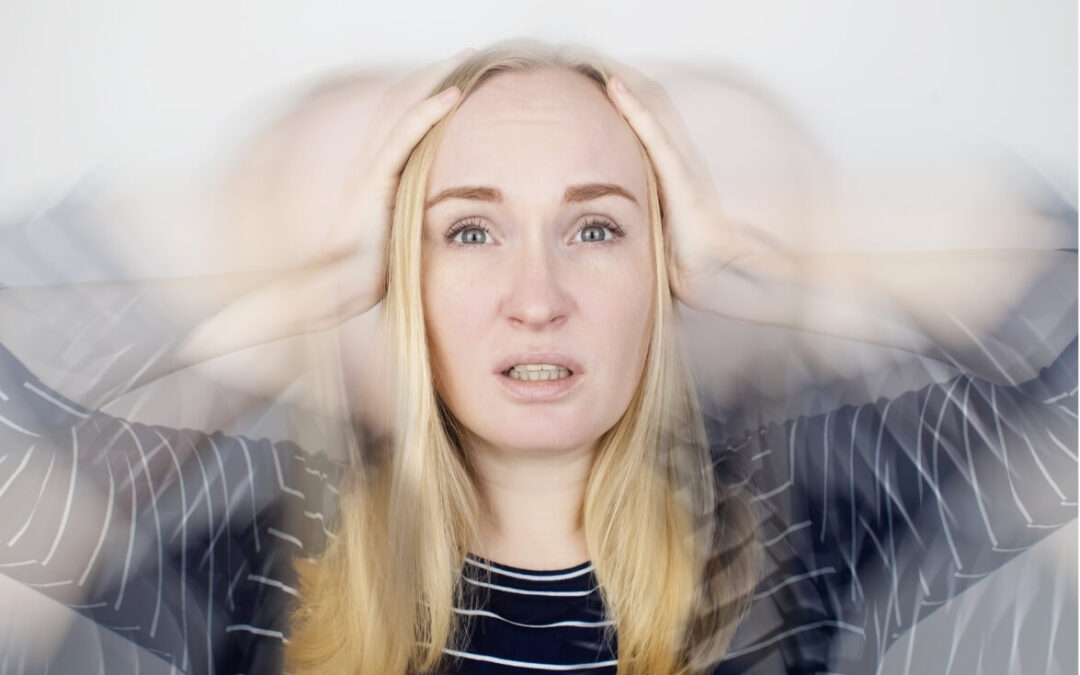
Vestibular migraine is a common yet often misunderstood condition that affects the balance system of the brain, causing dizziness, vertigo, and visual disturbances.
As the Principal Clinician at the Sydney Headache and Migraine Clinic, I’ve worked with many patients suffering from vestibular migraine and have seen how effective treatment can help them regain control over their lives.
In this blog, we’ll explore the pathophysiology of vestibular migraine, discuss the recommended management strategies, and review the treatment options, including how physiotherapy can play a vital role.
Pathophysiology of Vestibular Migraine
Understanding the underlying mechanisms of vestibular migraine is key to developing effective treatments.
Vestibular migraine combines features of both migraine and vestibular disorders, affecting the parts of the brain responsible for balance and spatial orientation.
Key Mechanisms Involved:
- Cortical Spreading Depression (CSD): This is a slow-moving wave of electrical activity in the brain’s cortex that is thought to trigger migraine symptoms, including aura and vestibular disturbances. In vestibular migraine, CSD may also affect areas of the brain that process balance and motion, leading to vertigo and dizziness.
- Brainstem Involvement: The brainstem, which plays a central role in processing sensory inputs from the inner ear, is believed to be hypersensitive in vestibular migraine sufferers. This hypersensitivity can lead to abnormal responses to visual and motion stimuli, resulting in dizziness and motion intolerance.
- Vestibular System Dysregulation: The vestibular system, which controls balance and spatial orientation, becomes dysregulated during vestibular migraine attacks. This can cause mismatched signals between the inner ear and the brain, leading to symptoms like vertigo, motion sickness, and difficulty with coordination.
Research Insights
A study published in Cephalalgia noted that vestibular migraine may involve disruptions in the brain’s processing of sensory information, leading to both migraine pain and vestibular symptoms like dizziness and vertigo.
However, the exact pathways are still not fully understood, making vestibular migraine a complex condition to treat.
Recommended Management for Vestibular Migraine
Managing vestibular migraine requires a multidisciplinary approach that focuses on reducing triggers, preventing attacks, and improving overall vestibular function.
- Identifying and Avoiding Triggers
Many vestibular migraine attacks are triggered by certain factors, and identifying these can significantly reduce the frequency of episodes. Common triggers include:
-
- Stress
- Hormonal changes (especially in women)
- Caffeine or alcohol consumption
- Lack of sleep
- Dietary factors such as chocolate, aged cheeses, or processed foods
Keeping a migraine diary to track potential triggers can help pinpoint what may be contributing to your attacks.
- Lifestyle Modifications
Making small but impactful lifestyle changes can significantly help manage vestibular migraine. Some recommendations include:
-
- Improving Sleep Hygiene: A consistent sleep schedule can reduce migraine frequency.
- Reducing Stress: Stress management techniques such as yoga, mindfulness meditation, and cognitive behavioural therapy (CBT) can be highly beneficial in lowering the likelihood of attacks.
- Dietary Adjustments: Reducing caffeine, alcohol, and other food triggers can decrease symptoms.
- Vestibular Rehabilitation and Physiotherapy
Physiotherapy, specifically vestibular rehabilitation, is one of the most effective non-pharmacological treatments for vestibular migraine. As the principal clinician at the Sydney Headache and Migraine Clinic, I often recommend vestibular rehabilitation exercises to help retrain the brain’s response to balance and motion, reducing dizziness and improving stability.
How Physiotherapy Helps
- Balance Retraining: Physiotherapists can guide you through exercises that improve balance and coordination, helping to manage vestibular dysfunction.
- Posture Correction: Poor posture can exacerbate vestibular symptoms. Correcting alignment in the neck and spine can alleviate the pressure on muscles contributing to migraine and dizziness.
- Strengthening Exercises: A customised exercise program can help strengthen the muscles around the neck and upper back, reducing strain that may trigger vestibular migraine.
- Manual Therapy: By treating the joints in the upper three vertebrae in your neck, we can desensitise the symptoms.
Studies have shown that vestibular rehabilitation therapy (VRT) significantly reduces symptoms in patients with vestibular migraine, leading to improved daily function and quality of life.
Treatment Options for Vestibular Migraine
Effective treatment for vestibular migraine often requires a combination of medication, lifestyle adjustments, and physiotherapy.
Medications
- Beta-Blockers: These are commonly prescribed to prevent migraine attacks by regulating blood pressure and reducing brain excitability. Medications like propranolol have been effective in preventing both typical migraine and vestibular symptoms.
- Calcium Channel Blockers: Verapamil, a calcium channel blocker, is often used to treat vestibular migraine by stabilising blood flow in the brain and reducing the frequency of attacks.
- Triptans: Triptans are acute medications used to stop a migraine attack in its early stages. While primarily used for typical migraines, they can also help alleviate vestibular migraine symptoms if taken during the onset of an episode.
- Anticonvulsants: Drugs like topiramate are sometimes prescribed to prevent vestibular migraine by stabilising nerve activity in the brain.
Vestibular Rehabilitation
As mentioned earlier, vestibular rehabilitation is an essential part of the treatment plan for vestibular migraine patients. This specialised form of physiotherapy helps retrain the brain to adapt to vestibular dysfunction, reducing dizziness, motion sensitivity, and vertigo over time.
Cognitive Behavioural Therapy (CBT)
Because stress is a major trigger for vestibular migraine, CBT can be a valuable tool in reducing anxiety and improving mental health. CBT helps patients reframe their thoughts, manage stress more effectively, and build resilience against migraine triggers.
Nutritional Supplements
Some patients benefit from supplements like magnesium, riboflavin (vitamin B2), and coenzyme Q10, which have been shown to reduce the frequency and severity of migraine attacks. These supplements help improve energy production in the brain and reduce inflammation.
Conclusion
Vestibular migraine is a complex condition that affects both the balance system and sensory processing in the brain. While much remains to be learned about the exact mechanisms behind vestibular migraine, we know that a comprehensive approach combining medication, lifestyle changes, and physiotherapy can significantly reduce symptoms.
At the Sydney Headache and Migraine Clinic, we are committed to helping patients manage their vestibular migraines through evidence-based treatments, including vestibular rehabilitation. If you or someone you know is suffering from vestibular migraine, we encourage you to reach out for a tailored treatment plan that addresses both migraine and vestibular symptoms.
Disclaimer:
This blog is general in nature and is intended for informational purposes only. It is not a substitute for professional medical advice, diagnosis, or treatment. If you are experiencing symptoms or have concerns about your health, please consult a qualified healthcare professional for personalised advice and treatment options.
References
- Furman JM, Marcus DA. Pathophysiology of Vestibular Migraine: Theories and Insights. Current Pain and Headache Reports. 2012.
- Dieterich M, Brandt T. Migraine-Associated Dizziness and Vertigo: Clinical Features and Management. Journal of Neurology. 2015.
- Beh SC. Vestibular Migraine: Mechanisms, Management, and Treatment. Practical Neurology. 2020.
- Whitney SL, et al. Vestibular Rehabilitation for Vestibular Migraine: Impact on Function and Quality of Life. Journal of Vestibular Research. 2021.
- Lempert T, Neuhauser H. Epidemiology and Diagnosis of Vestibular Migraine. The Lancet Neurology. 2009.
Written by:









